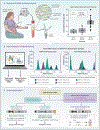High-Resolution and Noninvasive Fetal Exome Screening
- PMID: 37991862
- PMCID: PMC10711678
- DOI: 10.1056/NEJMc2216144
High-Resolution and Noninvasive Fetal Exome Screening
Figures

References
-
- Bianchi DW, Parker RL, Wentworth J, et al. DNA sequencing versus standard prenatal aneuploidy screening. N Engl J Med 2014;370:799–808. - PubMed
-
- Zhang J, Li J, Saucier JB, et al. Non-invasive prenatal sequencing for multiple Mendelian monogenic disorders using circulating cell-free fetal DNA. Nat Med 2019;25:439–47. - PubMed
-
- Guo MH, Gregg AR. Estimating yields of prenatal carrier screening and implications for design of expanded carrier screening panels. Genet Med 2019;21:1940–7. - PubMed
Publication types
MeSH terms
Grants and funding
LinkOut - more resources
Full Text Sources
Medical
